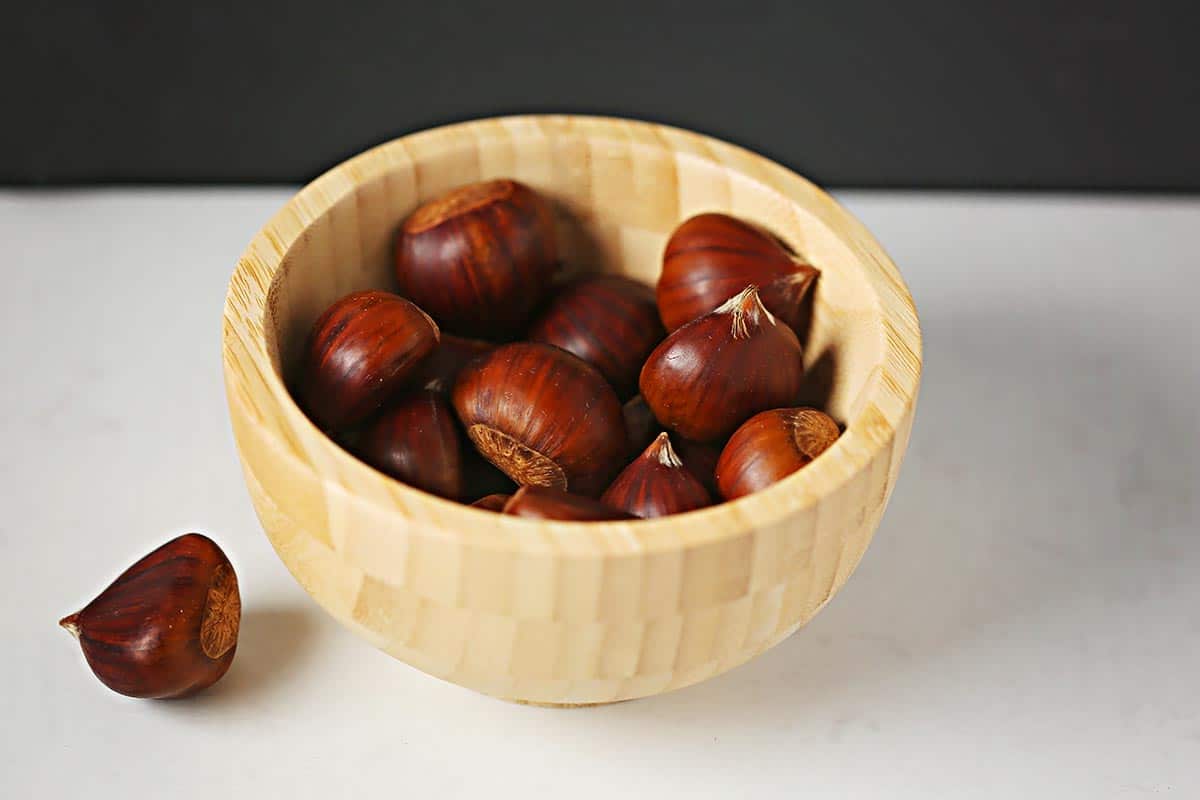

Articles
How To Store Chestnuts Before Roasting
Modified: January 5, 2024
Learn the proper way to store chestnuts before roasting with our informative articles. Essential tips and techniques for preserving the freshness and flavor of your chestnuts.
(Many of the links in this article redirect to a specific reviewed product. Your purchase of these products through affiliate links helps to generate commission for Storables.com, at no extra cost. Learn more)
Introduction
Welcome to our guide on how to store chestnuts before roasting! Chestnuts are a delicious and nutritious treat that many people enjoy during the cooler months. Whether used in desserts, stuffing, or simply roasted over an open fire, chestnuts bring a unique flavor and texture to your culinary creations.
However, to fully enjoy the rich and buttery taste of chestnuts, it is important to properly store them before roasting. Storing chestnuts correctly helps maintain their freshness, flavor, and texture, ensuring you get the best tasting nuts every time.
In this article, we will dive into the important aspects of chestnut storage, from choosing the freshest chestnuts to the different methods you can use to store them. We will also discuss how to check for spoilage and provide tips on roasting your stored chestnuts.
So, if you are ready to master the art of chestnut storage and enjoy the ultimate chestnut experience, continue reading!
Key Takeaways:
- Properly storing chestnuts is essential to maintain their freshness, flavor, and texture. Choose the best storage method based on your needs and resources to enjoy delicious chestnuts year-round.
- Regularly checking for spoilage and following proper roasting techniques ensures the safety and quality of your chestnuts. Enjoy the warm, comforting experience of roasting and savoring the rich, nutty taste.
Read more: How To Store Roasted Chestnuts
Importance of Proper Chestnut Storage
Proper chestnut storage is crucial to maintain the quality and flavor of these delicious nuts. Chestnuts have a high moisture content, which makes them susceptible to spoilage and drying out if not stored correctly. Here are a few reasons why proper chestnut storage is important:
- Preserve Freshness: Chestnuts are best enjoyed when they are freshly harvested. Proper storage techniques help to extend their shelf life, allowing you to enjoy the sweet, nutty taste over a longer period.
- Protect Flavor and Texture: Chestnuts have a delicate flavor and a rich, creamy texture. Improper storage can lead to the deterioration of these qualities, resulting in a loss of taste and a dry, mealy texture. By storing chestnuts correctly, you can preserve their flavor and texture for a more enjoyable eating experience.
- Prevent Spoilage: Chestnuts are prone to spoilage due to their high moisture content. Mold and bacteria can quickly develop when chestnuts are stored improperly, leading to a loss in quality and potential health risks. Proper storage techniques help minimize the risk of spoilage and ensure that the chestnuts remain safe to consume.
By taking the time to store your chestnuts correctly, you can prolong their freshness, maintain their flavor and texture, and reduce the chances of spoilage. This allows you to indulge in the delightful taste of chestnuts whether you roast them, use them in recipes, or simply enjoy them as a snack.
Choosing Fresh Chestnuts
When it comes to storing chestnuts, starting with the freshest nuts is essential. Here are some tips to help you choose the best quality and freshest chestnuts:
- Inspect the Shell: Look for chestnuts with smooth, shiny shells. Avoid nuts with cracks, holes, or any signs of damage, as they may have already started to spoil or dry out.
- Consider Weight: Fresh chestnuts should feel heavy for their size. Pick up a few nuts and compare their weights. Heavier nuts often indicate a higher moisture content, which is a sign of freshness.
- Check for Firmness: Squeeze the chestnuts gently to assess their firmness. Fresh chestnuts should feel firm and spring back when lightly squeezed. Avoid nuts that feel soft or mushy, as they may be past their prime.
- Look for Plumpness: Choose chestnuts that appear plump and full. Avoid nuts that look shriveled or have empty spaces within the shell, as they may have lost moisture and become dry.
- Consider the Color: The color of the chestnut shell can indicate its freshness. Look for chestnuts with a deep, brown color. Avoid nuts that have a pale or light color, as this may indicate age or spoilage.
It’s important to note that chestnuts are typically harvested in the fall and have a relatively short season. If possible, try to purchase your chestnuts during the peak season when they are fresh and readily available.
By choosing the freshest chestnuts, you set the foundation for successful storage. Fresh nuts have a higher moisture content, making them less prone to drying out and more likely to retain their flavor and texture during storage.
Preparing Chestnuts for Storage
Before you begin the storage process, it’s important to properly prepare your chestnuts. Follow these steps to ensure your chestnuts are ready for storage:
- Cleaning: Start by rinsing the chestnuts under cool water to remove any dirt or debris. Gently scrub the shells with a brush to remove any stubborn dirt particles. This step helps prevent contamination during storage.
- Drying: After cleaning, allow the chestnuts to air dry completely. Place them on a clean towel or a wire rack and let them sit at room temperature for a few hours. Make sure the nuts are fully dry before moving on to the next step.
- Hulling: To improve air circulation during storage, it’s recommended to remove the outer shell or hull of the chestnuts. Use a sharp knife to carefully make a shallow incision around the circumference of each nut. Be cautious not to cut too deep and damage the chestnut inside. After making the incision, peel off the outer shell along with the fuzzy inner skin, revealing the smooth chestnut inside.
Once your chestnuts are cleaned, dried, and hulled, they are now ready for storage. Preparing the chestnuts in this way helps to reduce the risk of mold growth and allows for better air circulation, preserving the quality of the nuts during storage.
Remember, proper preparation is essential for successful chestnut storage. By taking the time to clean, dry, and hull your chestnuts, you set the stage for effective storage methods that will keep the nuts fresh and flavorful for an extended period of time.
Methods for Storing Chestnuts
There are several methods you can use to store chestnuts, depending on your preferences and the available resources. Here are some common storage methods:
- Storing Chestnuts in the Refrigerator: One of the simplest ways to store chestnuts is by keeping them in the refrigerator. Place the cleaned, dried, and hulled chestnuts in a breathable bag or container and store them in the vegetable drawer of your refrigerator. The cool temperature and controlled moisture levels help to prolong their freshness. However, keep in mind that chestnuts stored in the refrigerator have a shorter shelf life compared to other methods.
- Storing Chestnuts in the Freezer: Freezing chestnuts is an excellent option for long-term storage. Start by blanching the chestnuts in boiling water for 1-2 minutes, then quickly transfer them to an ice bath to cool. Once cooled, dry them thoroughly and place in airtight freezer bags or containers. Label and date the packages before freezing. Frozen chestnuts can last for up to a year and can be thawed and used whenever needed.
- Storing Chestnuts in a Cool, Dark Place: If you don’t have access to a refrigerator or freezer, storing chestnuts in a cool, dark place is a viable option. Choose a location with a consistent temperature between 35-45°F (2-7°C) and low humidity. Place the chestnuts in a breathable bag or container, making sure to provide ample airflow. Check the nuts periodically and discard any that show signs of spoilage.
- Storing Chestnuts in Moist Sand: This method mimics the natural conditions of chestnut trees during winter, helping to maintain the nuts’ moisture content. Fill a container or box with damp sand or peat moss. Make shallow indentations in the sand, place the chestnuts in the indentations, and cover them with more sand. Store the container in a cool, dark place with a temperature around 35-45°F (2-7°C). Check the chestnuts regularly for spoilage and remove any damaged nuts.
Each storage method has its advantages and considerations. Choose the one that suits your needs and resources best. Remember to monitor your chestnuts regularly during storage and discard any that show signs of mold, excessive drying, or decay.
Now that you know the different methods for storing chestnuts, you can choose the one that works best for you and enjoy fresh, flavorful chestnuts throughout the year!
Read more: How To Store Pumpkin Seeds Before Roasting
Storing Chestnuts in the Refrigerator
Storing chestnuts in the refrigerator is a popular method that helps prolong their freshness and maintain their flavor. Here’s how you can store chestnuts in the refrigerator:
- Cleaning and Drying: Start by cleaning the chestnuts under cool water to remove any dirt or debris. Gently scrub the shells with a brush to ensure they are clean. After cleaning, let the chestnuts air dry completely. This step is crucial to prevent moisture buildup during storage.
- Hulling: To enhance air circulation and prevent mold growth, it’s recommended to remove the outer shell or hull of the chestnuts. Use a sharp knife to make a shallow incision around the circumference of each nut, then peel off the hull and the fuzzy inner skin.
- Packaging: Once the chestnuts are cleaned and hulled, place them in a breathable bag or container. You can use a paper bag, a mesh bag, or even a perforated plastic bag. The goal is to allow moisture to escape while still providing some protection from drying out.
- Refrigerator Placement: Store the chestnuts in the vegetable or crisper drawer of your refrigerator. This section typically provides the right humidity levels that help keep the chestnuts fresh. Avoid storing them near strong-smelling foods, as chestnuts can absorb odors easily.
- Temperature and Moisture: The optimal temperature for storing chestnuts in the refrigerator is around 35-45°F (2-7°C). Maintain a relatively high humidity level of around 85-90% to prevent the chestnuts from drying out. You can achieve this by placing a damp paper towel in the bag or container with the chestnuts.
- Regular Monitoring: Check the chestnuts regularly to ensure they remain in good condition. Remove any nuts that show signs of mold, decay, or excessive drying. Proper ventilation and periodic inspection are crucial for maintaining the quality of the stored chestnuts.
Using the refrigerator method, you can store chestnuts for a few weeks. However, keep in mind that chestnuts stored in the refrigerator have a shorter shelf life compared to other storage methods like freezing. Therefore, it’s recommended to consume them within a reasonable time frame to enjoy the best quality.
By following these steps and properly storing chestnuts in the refrigerator, you can ensure that your chestnuts stay fresh and delicious for as long as possible. So go ahead and stock up on chestnuts during the season, and enjoy their unique flavor all year round!
Store chestnuts in a breathable bag or container in the refrigerator for up to 2 weeks before roasting. This will help keep them fresh and prevent mold growth.
Storing Chestnuts in the Freezer
Freezing chestnuts is a convenient method for long-term storage, allowing you to enjoy their delicious flavor throughout the year. Here’s how you can store chestnuts in the freezer:
- Blanching: Start by blanching the chestnuts. Bring a pot of water to a rolling boil and carefully add the chestnuts. Let them boil for about 1-2 minutes. Blanching helps loosen the inner skin and makes peeling easier.
- Cooling: After blanching, quickly transfer the chestnuts to an ice bath to cool. This stops the cooking process and helps retain their texture and flavor. Leave them in the ice bath for a few minutes until they are cool to the touch.
- Peeling: Once the chestnuts are cooled, remove them from the ice bath and pat them dry. Use a sharp knife to peel off the outer shell and the inner skin. Take care not to remove too much of the chestnut flesh while peeling.
- Drying: Thoroughly dry the peeled chestnuts using a clean kitchen towel. Absorb any excess moisture to prevent the formation of ice crystals during storage.
- Packaging: Place the dried chestnuts in airtight freezer bags or airtight containers. It’s best to divide them into portions that you can easily thaw and use later. Make sure to label and date the packages for easy identification.
- Freezing: Lay the packaged chestnuts flat in the freezer and ensure they are properly sealed. Lay the bags or containers in a single layer to freeze them quickly. Avoid stacking or crushing the nuts to maintain their shape and quality.
- Storage Duration: Frozen chestnuts can be stored for up to a year. However, for the best flavor and texture, it’s recommended to consume them within six months of freezing.
- Thawing: When you’re ready to use the chestnuts, transfer them from the freezer to the refrigerator and let them thaw overnight. Thawing gradually in the refrigerator helps preserve their texture and flavor. Once thawed, they are ready to be roasted or used in your favorite recipes.
By following these steps, you can enjoy the delicious taste of chestnuts long after the harvest season. Freezing chestnuts allows you to have a readily available supply for your culinary creations and indulge in the warm, nutty flavor whenever you desire.
So whether you want to enjoy roasted chestnuts during the summer or use them in a festive holiday recipe, freezing is an excellent method for extended storage.
Storing Chestnuts in a Cool, Dark Place
If you don’t have access to a refrigerator or freezer, storing chestnuts in a cool, dark place is a viable option. Here’s how you can store chestnuts in a cool, dark place:
- Cleaning and Drying: Start by cleaning the chestnuts under cool water to remove any dirt or debris. Gently scrub the shells with a brush to ensure they are clean. After cleaning, let the chestnuts air dry completely. This step is crucial to prevent moisture buildup during storage.
- Hulling: To enhance air circulation and prevent mold growth, it’s recommended to remove the outer shell or hull of the chestnuts. Use a sharp knife to make a shallow incision around the circumference of each nut, then peel off the hull and the fuzzy inner skin.
- Dry Storage Container: Find a suitable dry storage container for your chestnuts. It can be a wooden crate, a cardboard box, or a breathable bag. Ensure that the container is clean, dry, and provides ample room for airflow.
- Layering: Place a layer of clean, dry sawdust, shredded newspaper, or untreated rice at the bottom of the container to create a cushioning bed for the chestnuts. This helps absorb excess moisture and provides a stable environment for storage.
- Arranging Chestnuts: Arrange the cleaned and hulled chestnuts in a single layer on the cushioning bed in the container. Avoid overcrowding the nuts, as it can restrict airflow and increase the risk of spoilage. If you have a large quantity of chestnuts, you can separate them into multiple layers, placing a layer of cushioning material between each layer.
- Covering: Once the chestnuts are arranged, cover the container loosely with a breathable cloth or lid. This allows for proper air circulation while protecting the nuts from light exposure.
- Storage Location: Find a cool, dark place in your home for storing the container. Ideally, the storage location should have a consistent temperature between 35-45°F (2-7°C) and low humidity. Avoid areas that are exposed to direct sunlight, as it can cause the chestnuts to dry out or spoil.
- Periodic Checking: Regularly check the chestnuts for signs of spoilage. Remove any nuts that show mold, decay, or excessive drying. It’s important to inspect the stored chestnuts every few weeks and discard any that have gone bad.
By storing chestnuts in a cool, dark place, you can enjoy their freshness and flavor for a few weeks. The controlled environment helps maintain the moisture content and prevents the nuts from drying out or spoiling quickly.
Remember to inspect the chestnuts periodically and consume them within a reasonable time frame to enjoy their optimal quality and taste.
Storing Chestnuts in Moist Sand
Storing chestnuts in moist sand is a traditional method that replicates the natural conditions in which chestnuts are found during winter. Here’s how you can store chestnuts in moist sand:
- Cleaning and Drying: Start by cleaning the chestnuts under cool water to remove any dirt or debris. Gently scrub the shells with a brush to ensure they are clean. After cleaning, let the chestnuts air dry completely. Make sure they are thoroughly dry before proceeding to the next step.
- Hulling: To enhance air circulation and prevent mold growth, it’s recommended to remove the outer shell or hull of the chestnuts. Use a sharp knife to make a shallow incision around the circumference of each nut, then peel off the hull and the fuzzy inner skin.
- Preparing the Sand: Moisten clean sand or peat moss until it reaches a damp but not wet consistency. You want the sand to hold together when squeezed but not release excess water. Prepare enough sand to cover the chestnuts completely in the storage container.
- Layering: Place a layer of moist sand at the bottom of a container, such as a wooden crate. Make shallow indentations in the sand and place the cleaned and hulled chestnuts in the indentations. Make sure the chestnuts are completely covered by adding more moist sand on top.
- Container Covering: Once the chestnuts are layered and covered with moist sand, loosely cover the container with a breathable cloth or lid. This allows for proper air circulation while protecting the chestnuts from light exposure.
- Storage Location: Find a cool, dark place in your home for storing the container. The storage location should have a consistent temperature between 35-45°F (2-7°C). Avoid areas that are exposed to direct sunlight or extreme temperature fluctuations, as these conditions can harm the chestnuts.
- Periodic Checking: Regularly check the chestnuts for signs of spoilage. Carefully remove a few chestnuts from the sand and inspect them for mold, decay, or excessive drying. If any chestnuts show signs of spoilage, discard them immediately to prevent the spread of mold or bacteria to the other chestnuts.
- Moisture Maintenance: It’s important to periodically check the sand’s moisture level. If the sand becomes too dry, lightly spritz it with water to maintain the desired dampness. Avoid over-saturating the sand, as excessive moisture can lead to mold growth.
Storing chestnuts in moist sand is a time-honored method that helps maintain the nuts’ moisture content during storage. The sand provides a stable environment and helps prevent dehydration, ensuring the chestnuts remain plump and flavorful for an extended period.
Remember to inspect the chestnuts regularly and consume them within a reasonable time to enjoy the best quality. With proper storage in moist sand, you can savor the delicious taste of chestnuts throughout the year.
Read more: How To Store Chestnuts
Checking Chestnuts for Spoilage
Regularly checking your stored chestnuts for spoilage is essential to ensure that you are consuming safe and flavorful nuts. Here are some signs to look out for when checking chestnuts for spoilage:
- Mold or Discoloration: Inspect the chestnuts for any signs of mold or discoloration. Mold can appear as fuzzy patches or dark spots on the outer shell. If you notice any mold or discoloration, it’s important to discard the affected chestnuts to prevent the spread of mold to the rest of the batch.
- Off or Rotten Smell: Give the chestnuts a gentle sniff. If you detect any unpleasant, off, or rotten smell, it’s a clear indication of spoilage. Fresh chestnuts should have a mild, nutty aroma. If the smell is foul or rancid, it’s best to dispose of the chestnuts.
- Texture and Firmness: Squeeze the chestnuts gently to assess their texture and firmness. Fresh chestnuts should feel firm and spring back when lightly squeezed. If the chestnuts feel soft, mushy, or have a mealy texture, they may be spoiled or dried out.
- Rotten or Hollow Nuts: Occasionally, chestnuts may develop internal decay or become hollow. In these cases, the chestnuts will feel lighter when compared to their size and may have a hollow sound when tapped. Discard any nuts that feel hollow or show signs of internal decay.
- Visible Decay or Deterioration: Examine the chestnuts closely for any visible signs of decay, deterioration, or insect infestation. Look for soft spots, oozing liquid, or visible holes in the shells. If you notice any abnormalities, it’s best to err on the side of caution and discard the affected chestnuts.
If you come across a chestnut that exhibits any of these signs of spoilage, it’s recommended to remove it from the batch immediately. Isolating the spoiled chestnut helps prevent the spread of mold or bacteria to the other chestnuts and ensures that you are consuming only the safe and high-quality nuts.
Regularly checking and culling any spoiled chestnuts from your stored batch helps maintain the overall quality and freshness of the remaining chestnuts, allowing you to enjoy the best flavor and texture when using them for roasting, baking, or cooking.
Tips for Roasting Stored Chestnuts
Roasting chestnuts is a beloved tradition, especially during the holiday season. If you’ve stored chestnuts and are ready to roast them, here are some helpful tips for achieving perfectly roasted nuts:
- Thawing: If you stored your chestnuts in the freezer, make sure to thaw them fully before roasting. Transfer them from the freezer to the refrigerator and let them thaw overnight. Thawing gradually in the refrigerator helps retain their texture and flavor.
- Preheating the Oven: Preheat your oven to 425°F (220°C) before roasting the chestnuts. This high heat helps ensure a crispy outer shell and a creamy, tender interior.
- Scoring the Chestnuts: Prior to roasting, make a small incision or “X” on the rounded side of each chestnut. This helps prevent the nuts from exploding during the roasting process and allows steam to escape.
- Seasoning: For additional flavor, consider seasoning the chestnuts before roasting. You can toss them with a drizzle of olive oil and sprinkle them with a pinch of salt, pepper, or your favorite herbs and spices. This will add a delicious savory note to your roasted chestnuts.
- Roasting Time and Temperature: Spread the chestnuts in a single layer on a baking sheet with the scored side facing up. Roast them in the preheated oven for about 15-20 minutes, or until the shells have opened and the interior chestnut is tender. Adjust the roasting time based on the size and freshness of your chestnuts.
- Shaking the Pan: About halfway through the roasting process, gently shake the baking sheet to prevent the chestnuts from sticking and ensure even cooking. This helps to achieve an evenly roasted and flavorful batch.
- Cooling and Peeling: After roasting, remove the chestnuts from the oven and let them cool for a few minutes. While they’re still warm, carefully peel off the outer shell and inner skin. The chestnuts should come out easily, revealing their soft, creamy flesh.
- Serving and Enjoyment: Once you’ve peeled the roasted chestnuts, they are ready to be enjoyed. Serve them warm as a snack, use them in recipes, or incorporate them into stuffing, salads, or desserts. The nutty, caramel-like flavor is truly delightful.
Roasting stored chestnuts brings out their natural sweetness and adds a delightful aroma to your home. The tips mentioned above will help you achieve perfectly roasted chestnuts that are both delicious and satisfying.
So gather your loved ones around the fireplace, and savor the warm and comforting experience of enjoying roasted chestnuts during the holiday season or anytime you crave a tasty treat.
Conclusion
Properly storing chestnuts before roasting is crucial for preserving their freshness, flavor, and texture. Whether you choose to store them in the refrigerator, freezer, a cool, dark place, or moist sand, each method offers its own benefits and considerations.
When storing chestnuts, it’s important to start with fresh nuts that are free from cracks, mold, and other signs of damage. Properly cleaning, drying, and hulling the chestnuts ensures they are in the best condition for storage.
By following the recommended storage methods and periodically checking for spoilage, you can enjoy chestnuts for weeks to months, and even up to a year with freezing. Whether you roast the chestnuts, use them in recipes, or simply enjoy them as a snack, proper storage contributes to the best culinary experience.
Remember to observe the signs of spoilage, such as mold, discoloration, off smells, or soft textures, to ensure the safety and quality of your chestnuts. Discarding any spoiled nuts prevents the spread of mold or bacteria to the remaining batch.
Finally, when you’re ready to roast your stored chestnuts, follow the proper thawing process for frozen chestnuts and employ helpful tips like scoring the nuts, seasoning, and monitoring the roasting time and temperature. This ensures that the roasted chestnuts have a deliciously crispy exterior and a creamy, tender interior.
So, whether you’re enjoying the warmth and nostalgia of roasting chestnuts over an open fire, incorporating them into your favorite holiday dishes, or simply relishing their unique flavor, proper storage and roasting techniques make all the difference.
Store your chestnuts with care, and let them bring joy and a sense of togetherness to your table. Enjoy the rich, nutty taste of chestnuts throughout the year, and create lasting memories with family and friends.
Frequently Asked Questions about How To Store Chestnuts Before Roasting
Was this page helpful?
At Storables.com, we guarantee accurate and reliable information. Our content, validated by Expert Board Contributors, is crafted following stringent Editorial Policies. We're committed to providing you with well-researched, expert-backed insights for all your informational needs.
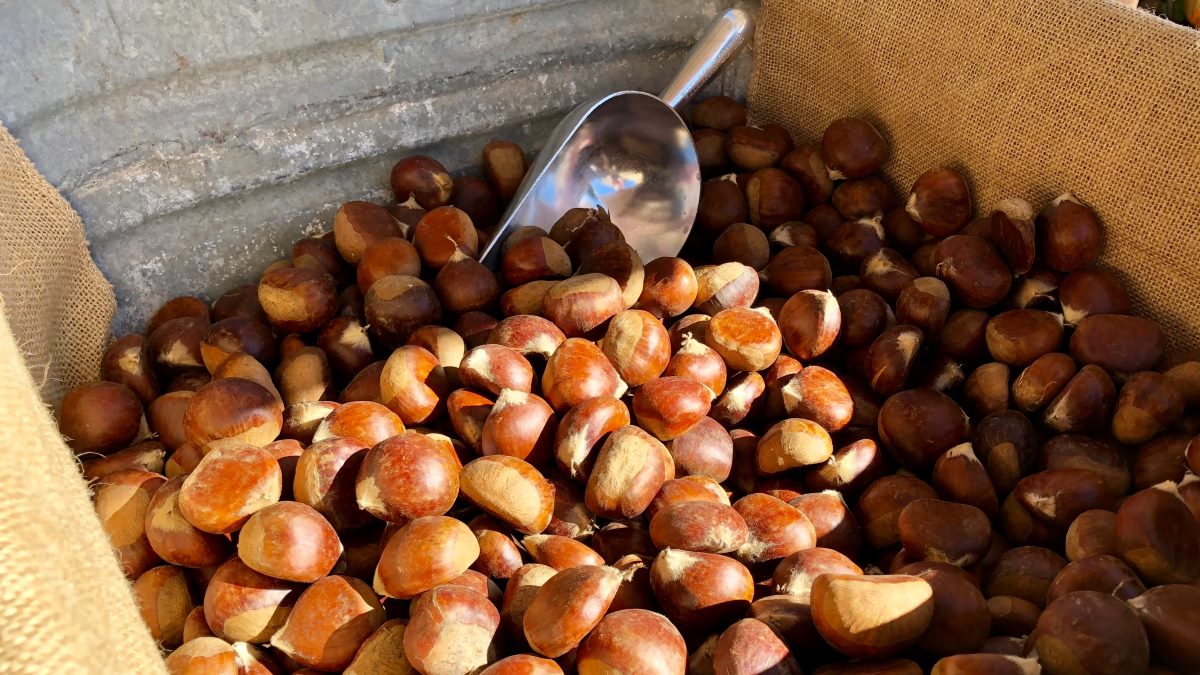
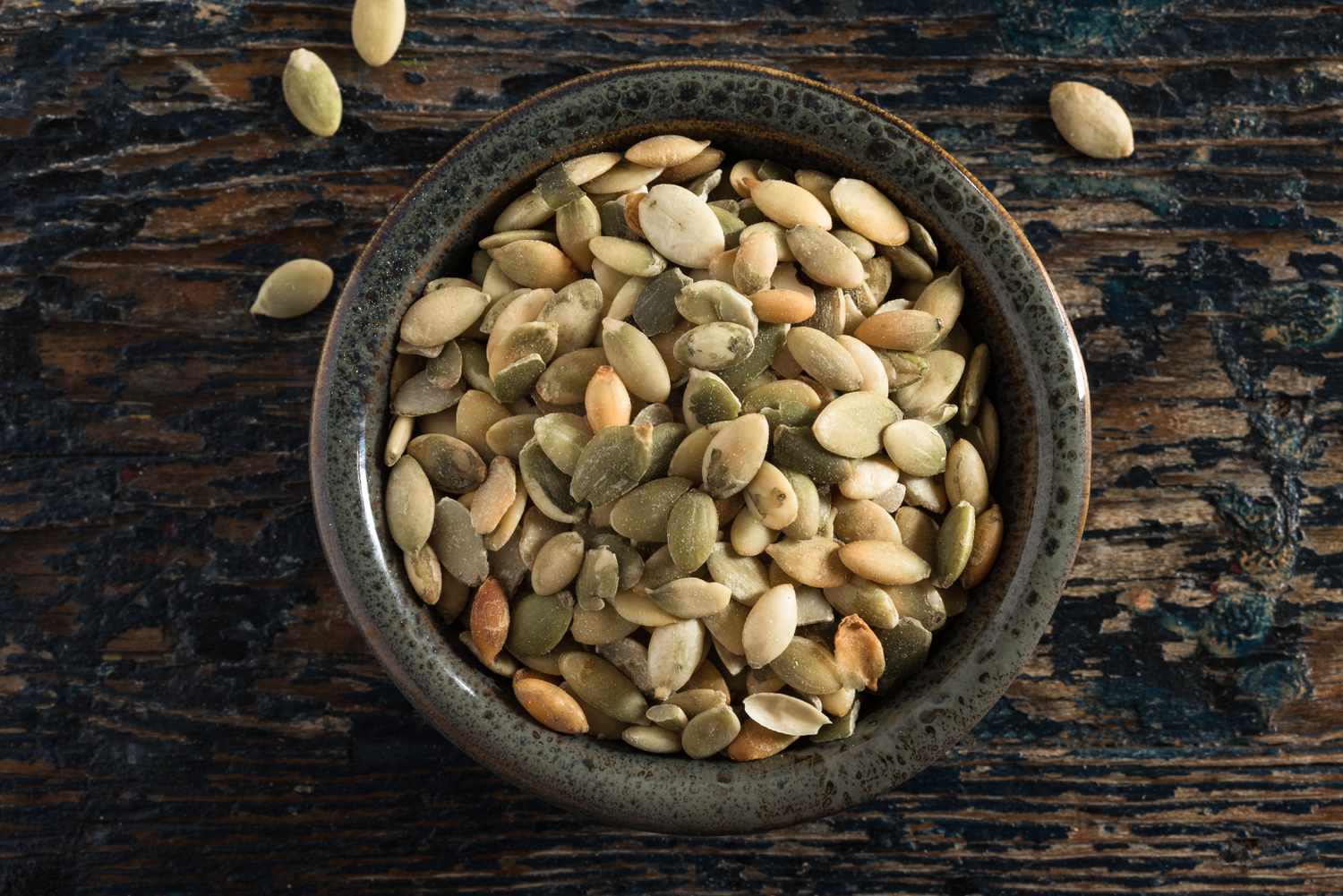
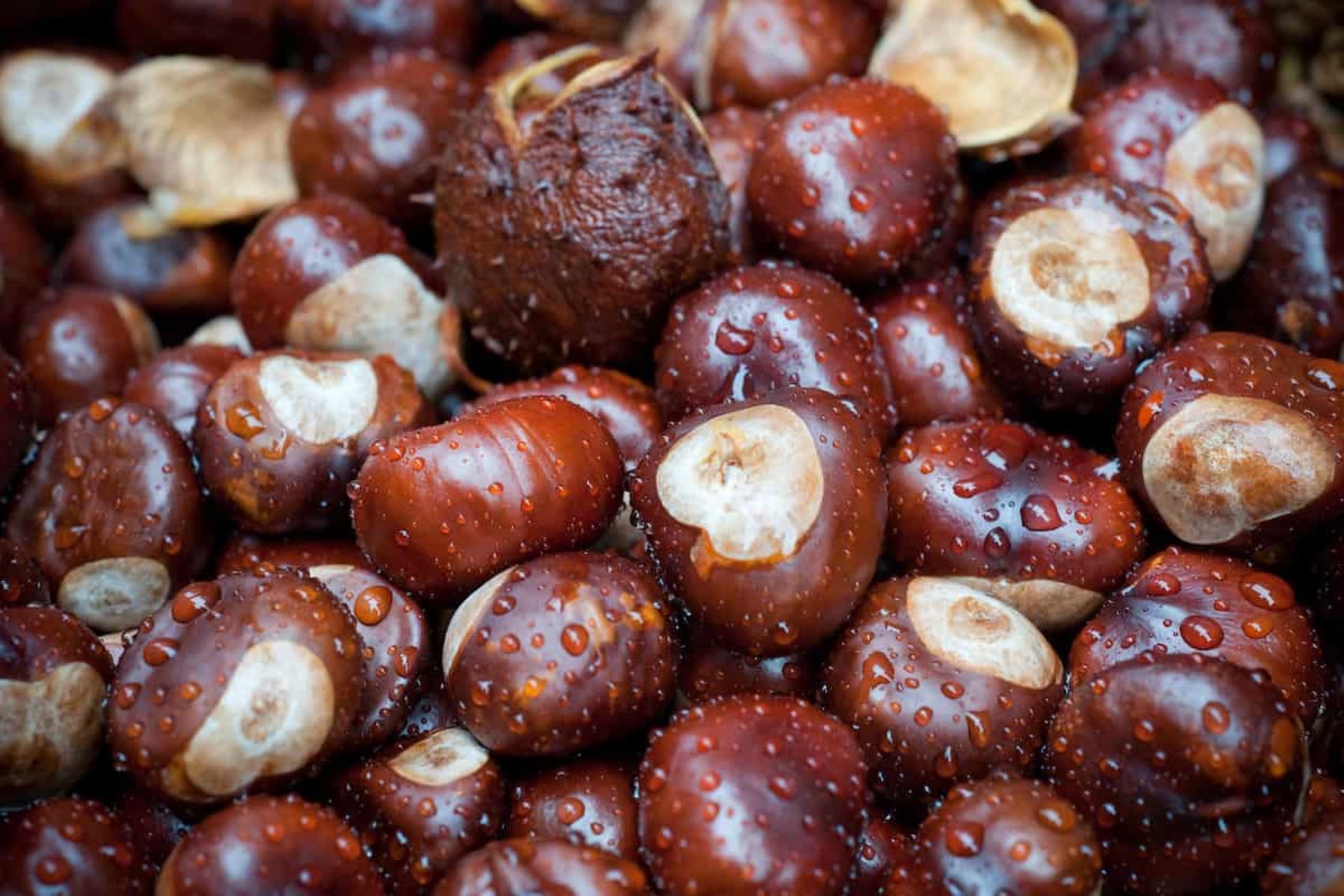
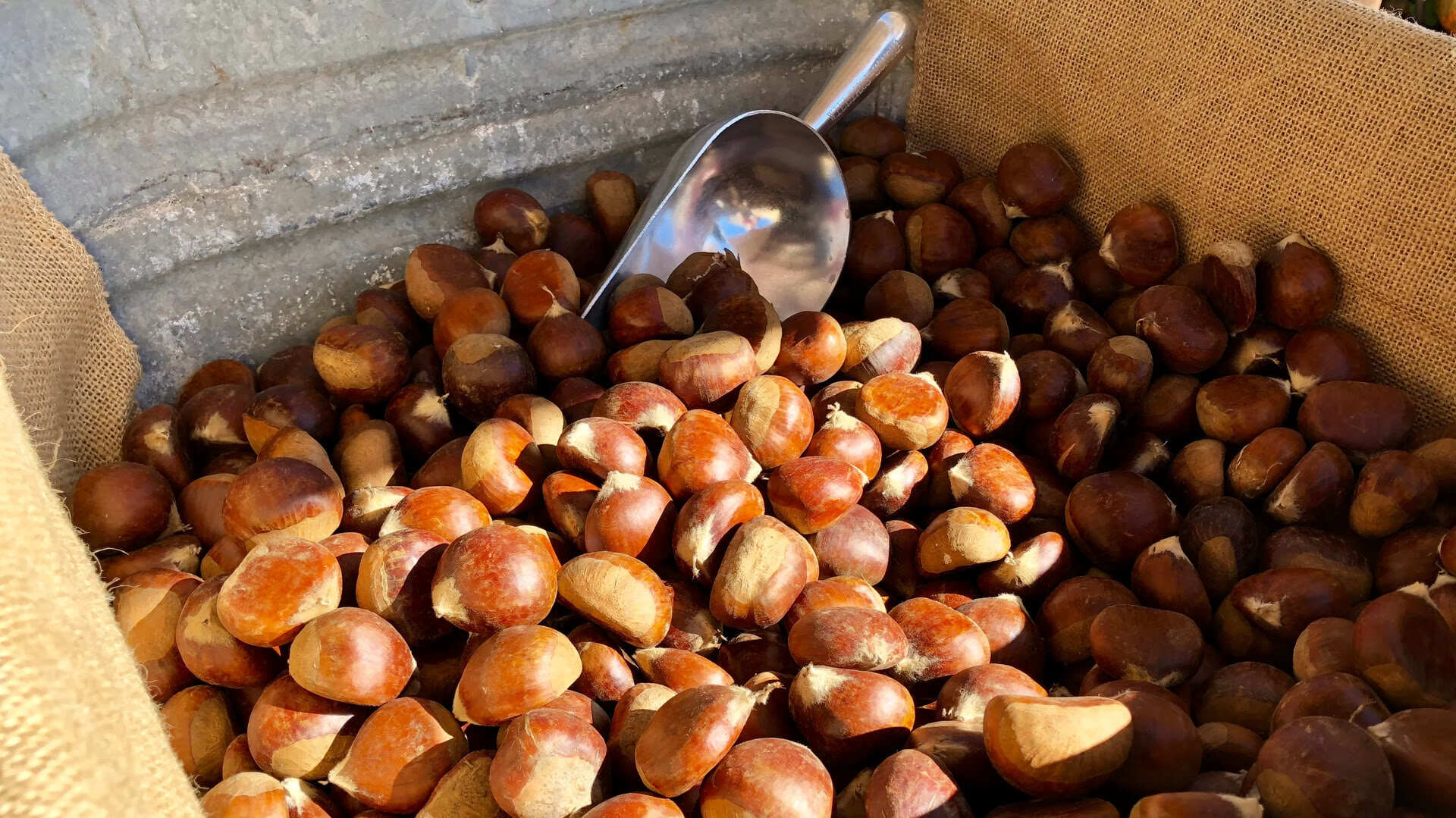
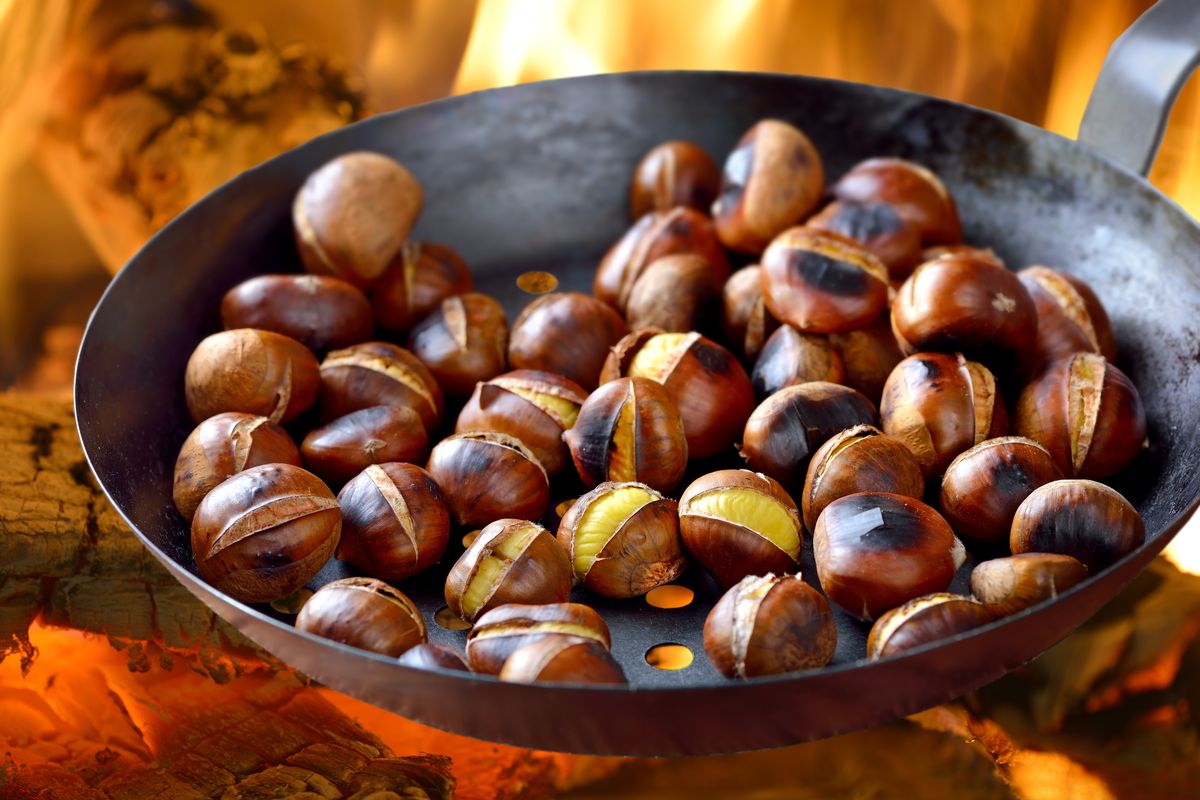
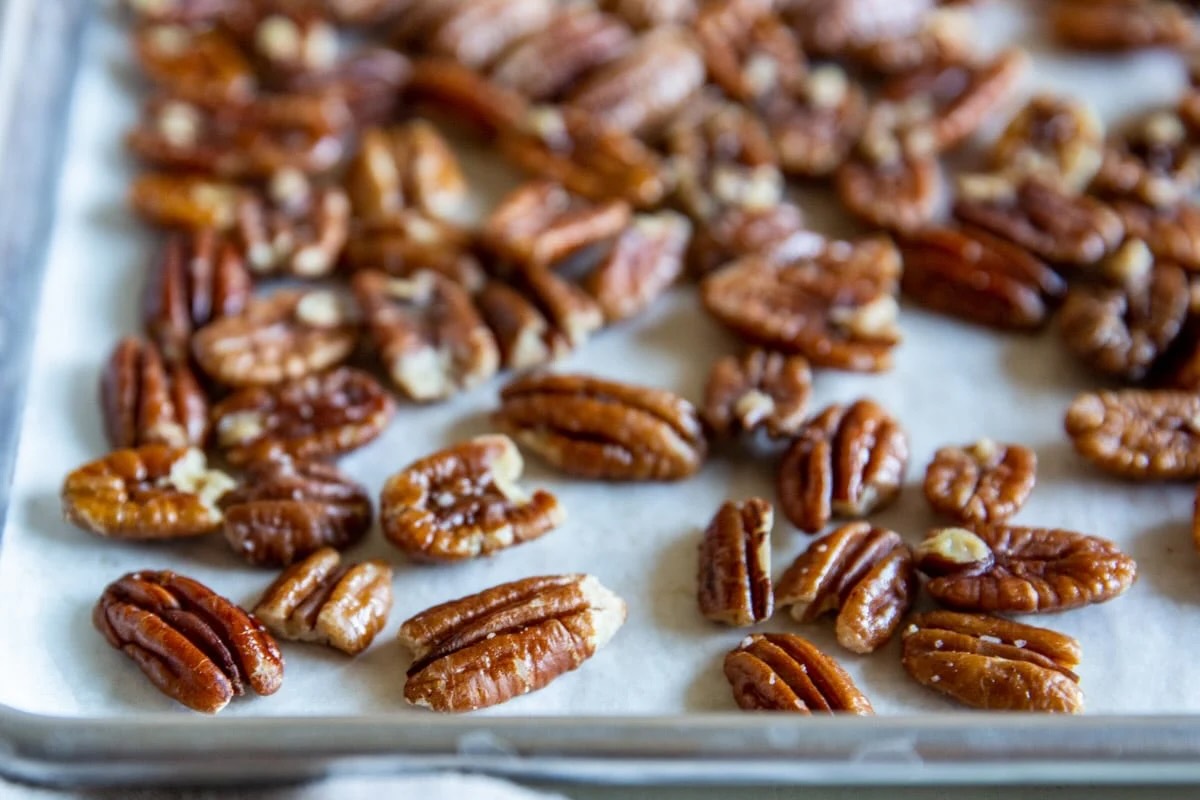
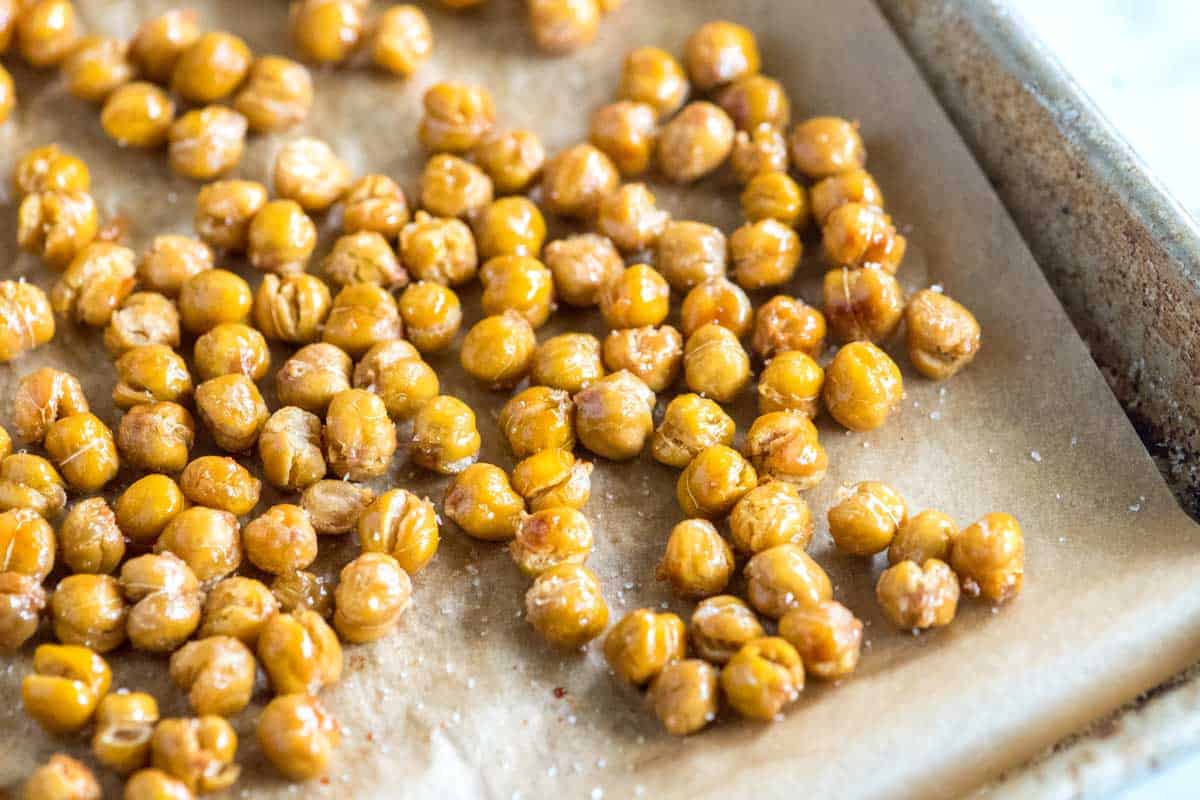
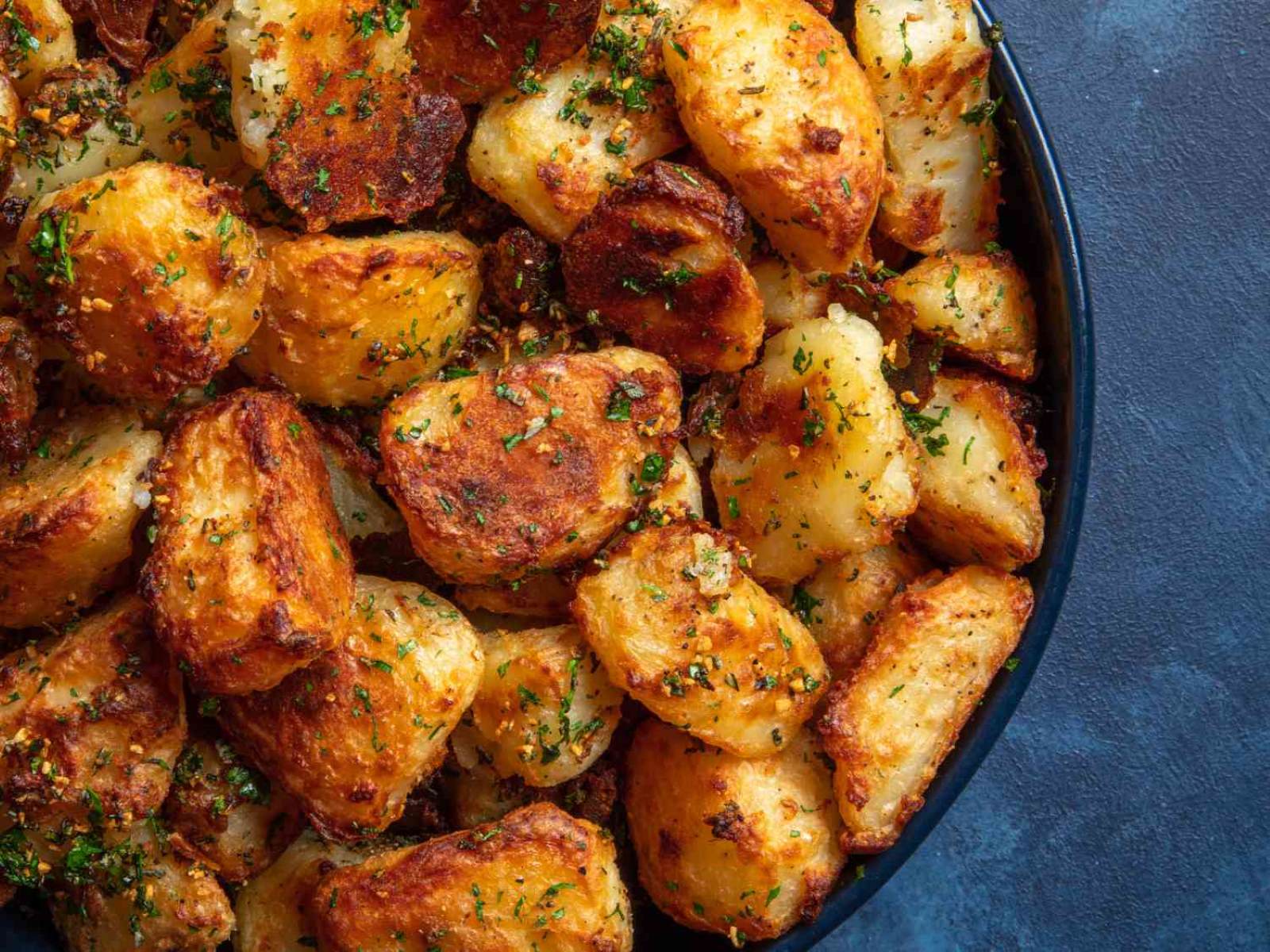
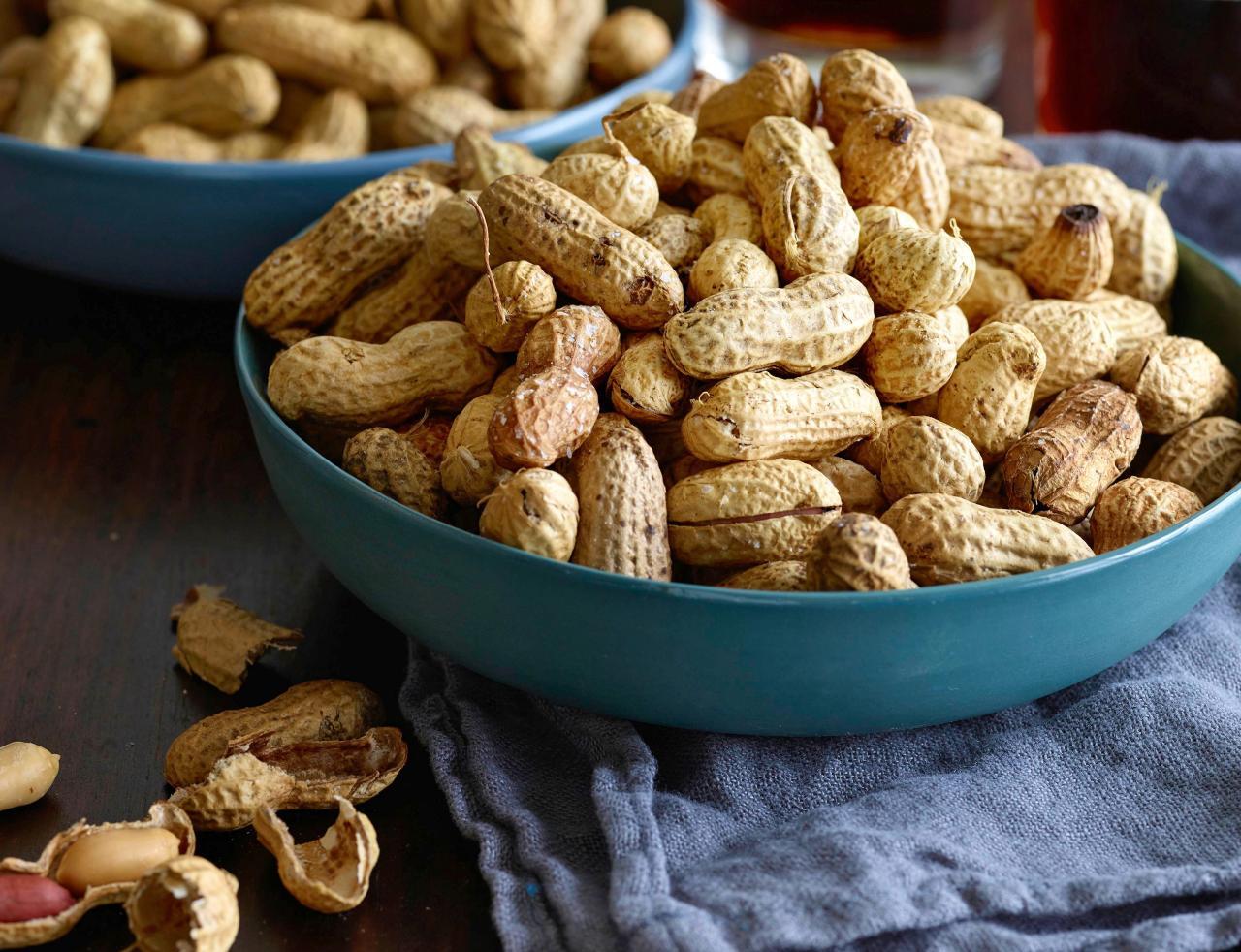
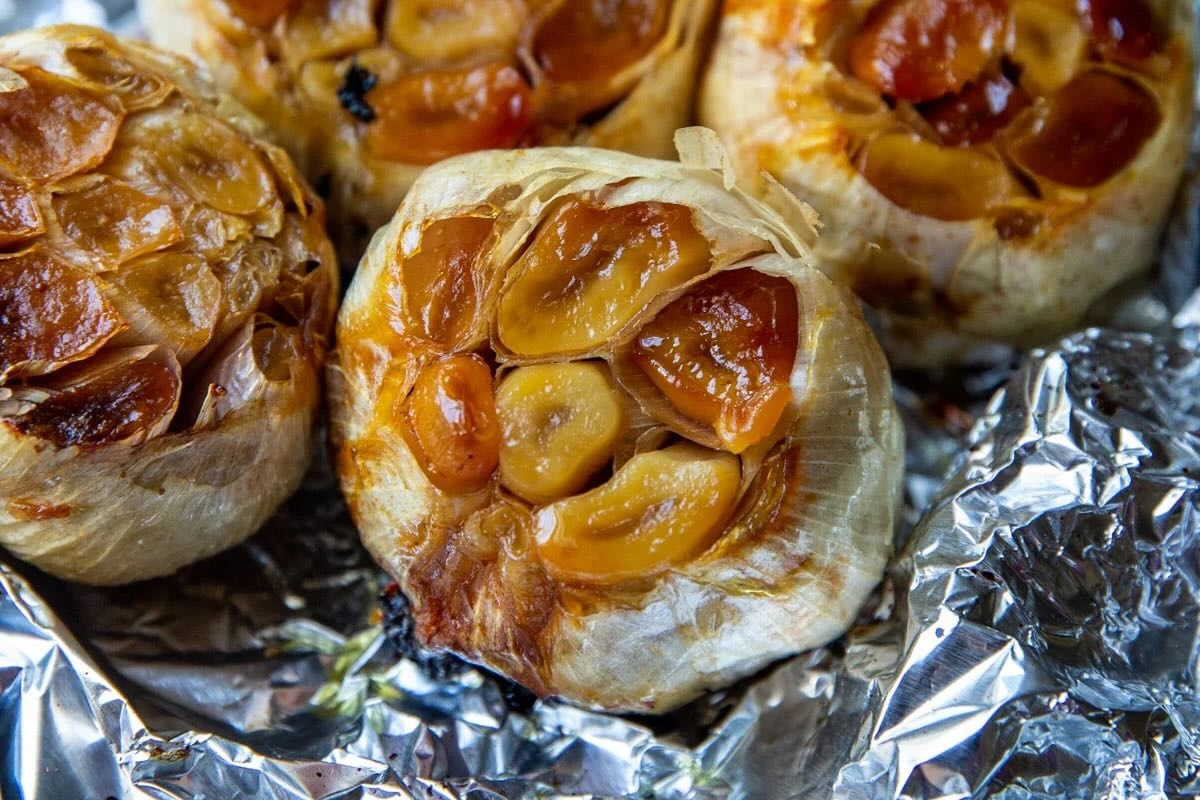

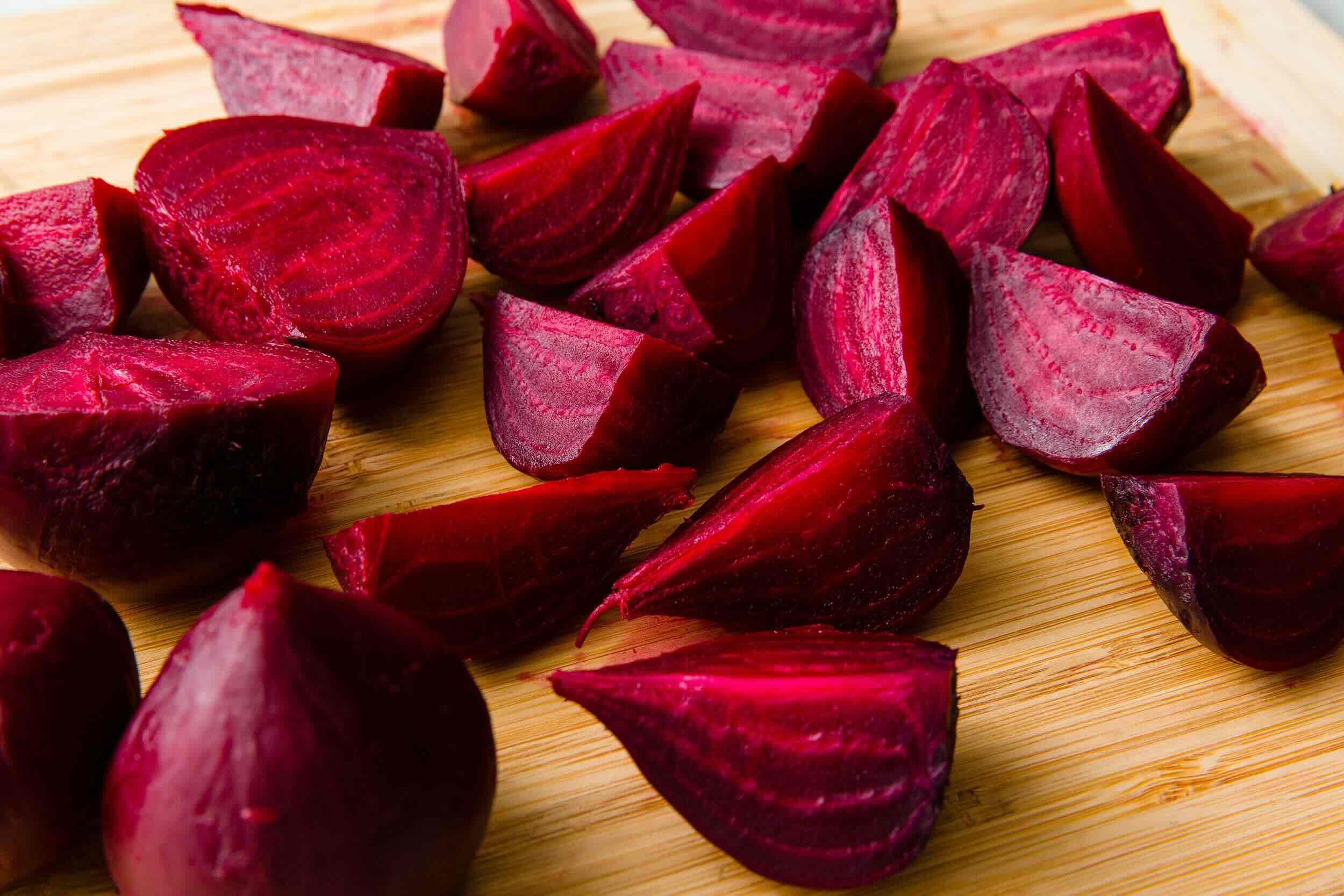


0 thoughts on “How To Store Chestnuts Before Roasting”